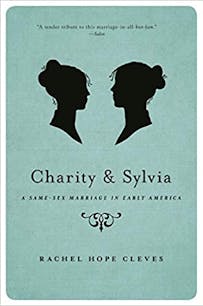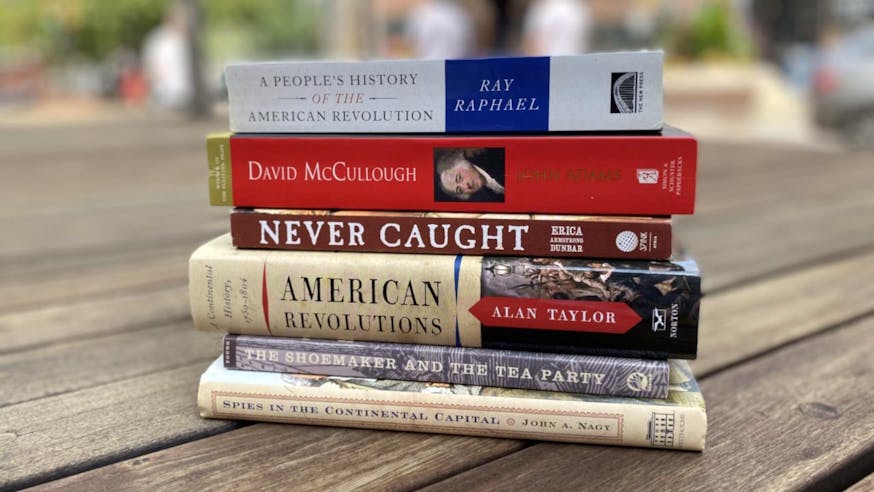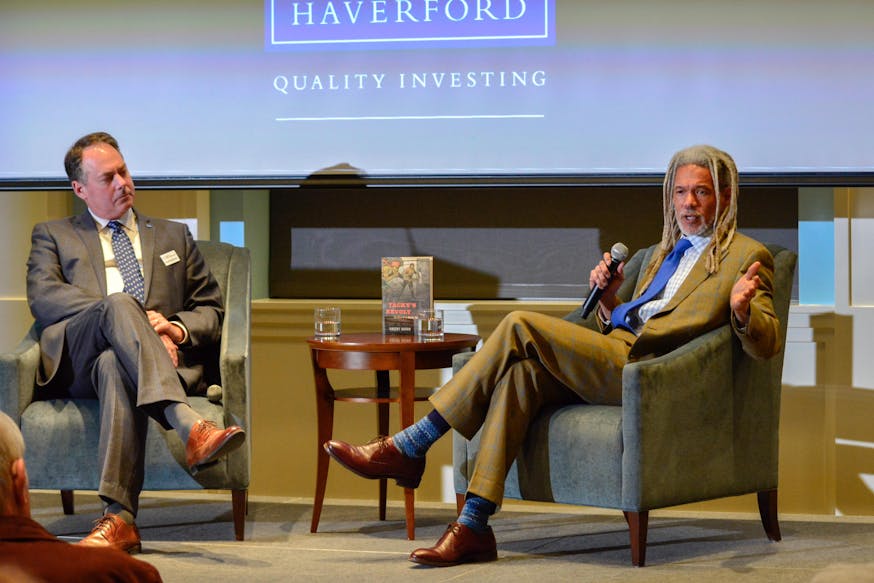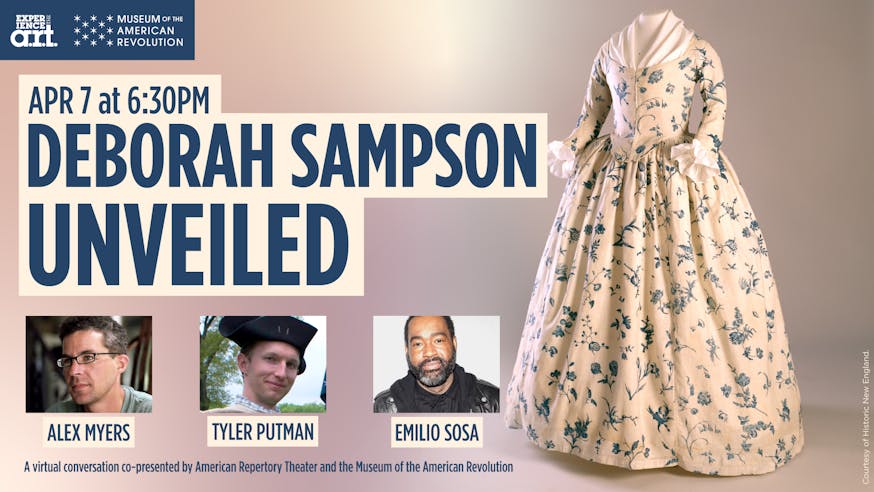Read the Revolution
Charity and Sylvia
June 8, 2022
Purchase the book from Oxford University Press.
In the Revolutionary era, sexual and gender identities and experiences were as varied as the people. In 1782, a Massachusetts woman named Deborah Sampson disguised herself as a man and served for over a year as a Revolutionary soldier before returning to life as a conventional 18th-century woman. Recent investigations of the skeletal remains of Polish Revolutionary hero Casimir Pulaski, who lived as a man, suggest that he was probably intersex. And in a small town in Vermont, between 1807 and 1851, two ordinary women lived openly as a married couple.
Thanks to the research of historian Rachel Hope Cleves, the story of Charity Bryant and Sylvia Drake show us the possibilities and hurdles faced by people in same-sex relationships in the years after independence. Despite living in a rural environment — or perhaps precisely because of the small, intimate nature of their community — Sylvia and Charity lived in a romantic marriage that was eventually no secret from their neighbors and family. In Charity & Sylvia: A Same-Sex Marriage in Early America, Cleves explores the biographies of these women, their correspondence and poetry, and the communities in which they lived. As she demonstrates below, every word counts in understanding the mindset and culture of these women’s world. Above all, their story shows us the empowering and surprising possibilities of life in the new nation.
This Pride Month, read an excerpt about the 13 "well-chosen words" in Charity's memoir establishing her marriage to Sylvia.
Excerpt
“On the 3rd day of July 1807,” Charity wrote in a brief 1844 memoir of her life, Sylvia Drake “consented to be my help-meet and came to be my companion in labor.” In thirteen well-chosen words, two stricken out, Charity, master at rebuses [Editor's Note: here, the author is referencing the 18th-century “rebus,” a popular type of puzzle or riddle that used pictures to hint at common phrases], disguised a radical assertion: that she and Sylvia began their lives together by uniting in a marriage.
Each word built this astounding claim. To begin, Charity averred that Sylvia had “consented” to a union between the women. For nearly a millenium, “consent” had served as the touchstone of marriage in the European tradition. Neither a minister’s presence nor a civil license was necessary if it could be proved that two people had consented to marry one another. The passage of the Hardwicke Act in England in 1753 imposed licensing restrictions that cracked down on the problem of clandestine marriages. But in the United States, nineteenth-century jurists continued to affirm that couples could establish common-law marriages legitimated by mutual consent alone, rather than civil or religious authority. This right to enter into marriage by consent could even override the rules that governed who was eligible to marry. At times, courts recognized consent-based common-law marriages in which one spouse had a civil disability, such as being enslaved or underage, which excluded him or her from marrying. Charity and Sylvia’s connection, which defied the legal definition of marriage as the “union of a man and woman,” fell within this gray zone.
Charity’s next words, describing Sylvia as “my help-meet,” built her claim that the women’s relationship constituted a marriage. She adopted the phrase from the passage in the book of Genesis where God creates Eve as a help-meet to Adam (2:18). In the Protestant culture of early America, help-meet served as a common synonym for wife. Charity’s use of the pronoun “my” before the word “help-meet” further claimed Sylvia as a wife by taking possession of her. In his influential Commentaries (1765-1769), jurist William Blackstone explained that under coverture law a wife’s “very being” fell under the “protection” of her husband upon marriage; all her property, and to a large extent her body, became his. Ownership defined the relationship of husband and wife. Although Charity and Sylvia, like many nineteenth-century feminists, would challenge Blackstonian doctrine by insisting on an equitable distribution of property in their own union, Charity used the semantic resonance of the possessive phrase “my help-meet” to establish the marital quality of her and Sylvia’s union.
Sign Up
Get biweekly Read the Revolution featured excerpts right to your inbox.
Charity followed her description of Sylvia as her help-meet with the elaboration that Sylvia “came to be my companion.” The implication that Sylvia had left a prior home to join Charity established both that she and Sylvia began cohabitating on a specific date and that they resided under Charity’s roof. These assertions contributed to the representation of the relationship as marital. Following English precedent, the early American legal scholar James Kent listed “cohabitation” as a primary evidence of common-law marriage, along with consent. Equally important, in New England social practice couples typically marked their married lives as beginning when they went “to housekeeping” under the husband’s roof. Charity’s memoir demonstrated that she and Sylvia had followed traditional practice.
Finally, by crossing out the words in labor — the only correction made to the 1844 memoir — Charity emphasized that her life with Sylvia originated in love, not in economic need. Their relationship fit the new nineteenth-century romantic definition of marriage as a union of souls, as well as the earlier colonial understandings of marriage as a pragmatic partnership. Charity seemingly wrote the words in labor in order to strike them through and correct any misapprehension by future generations. The women worked together in order to live together, not the other way around. Sylvia’s contribution to the tailoring business provided the couple with the combined resources they required to support themselves. Their longstanding union did not evolve out of a practical work arrangement.
By 1844, when Charity penned her memoir, her marriage to Sylvia had long since acquired social force, if not legal validity, within the Weybridge area. As one local man, Hiram Hurlburt, recalled from growing up during the 1830s, everyone in town regards the women “as if Miss Bryant and Miss Drake were married to each other.” Communal acceptance of the women’s marital relationship did not come all at once, however. It took years for the women to make their private commitment to each other public knowledge. If in the summer of 1807 Sylvia and Charity had talked openly about their relationship as a marriage, the families would have been compelled to break the lovers apart. Social sanction extended to intense attachments between women only when those relationships did not interfere with conventional family structure. Forswearing traditional marriage to live their lives together broke that fundamental agreement. So at the beginning, Charity and Sylvia needed to preserve the fiction that their futures remained undetermined.
Read the Revolution is sponsored by The Haverford Trust Company.
Read the Revolution is published biweekly by the Museum of the American Revolution to inspire learning about the history of the American Revolution and its ongoing relevance.
Tags
Learn More

Read the Revolution

Read the Revolution Speaker Series

